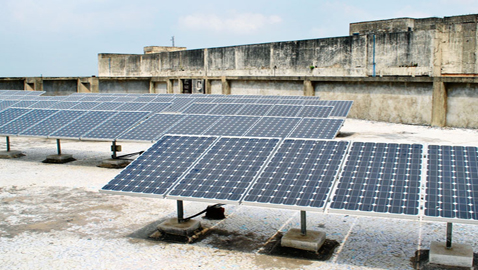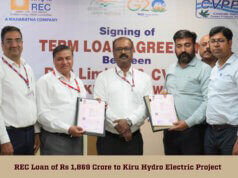
Public sector banks in India have begun encouraging home loan and home improvement loan seekers to install roof top solar photovoltaic plants and include the cost of such equipment in their loan proposals just like non-solar lighting, wiring and other fittings.
In November last year, the Department of Financial Services, Ministry of Finance, wrote to all public sector banks directing that the installation of rooftop solar PV systems should be encouraged at the time of extending home loans as well as repair and renovation loans.
Following the directive from the MoF, public sector banks including Syndicate Bank, Bank of India, Dena Bank, State Bank of India, Central Bank of India, Indian Overseas Bank, Punjab National Bank and Allahabad Bank have either issued necessary guidelines or initiated measures to include the cost of rooftop solar PV plants in the project cost under different housing loan schemes. The banks are also organising workshops and awareness programmes in association with dealers and companies approved by the Ministry of New and Renewable Energy to popularise the installation of rooftop solar PV plants among existing home loan borrowers.
The MNRE has set a target to install 40,000 MWp of grid-interactive rooftop solar photovoltaic plants in the next five years. These plants will be set up in residential, commercial, industrial and institutional sectors with capacities ranging from 1 kWp to 500 kWp.
Of late, rooftop solar PV plants have become economically viable. The cost of electricity generated by these plants is about Rs.7 per kWh without any subsidy from the government.
As of December 31, 2014, the aggregate capacity of the grid-connected rooftop projects sanctioned by the MNRE stood at 356 MWp while the installed aggregate capacity was 40 MWp.
There are several benefits available for setting up grid-connected rooftop and small solar power plants in the country. The benefits include accelerated depreciation to eligible industry and commercial establishments, availability of net metering and feed-in-tariff/gross metering facilities in Andhra Pradesh, Chhattisgarh, Delhi, Gujarat, Haryana, Karnataka, Kerala, Tamil Nadu, Uttarakhand, West Bengal, Andaman and Nicobar, Chandigarh, Dadra and Nagar Haveli, Daman and Diu, Lakshadweep, Puducherry and Goa, state subsidies, and access to less costly solar power compared to conventional electricity tariff applicable for commercial and high-end users. These benefits are in addition to the subsidy provided by the MNRE, currently under revision and likely to be reduced up to 15 per cent from the present level of 30 per cent.
The Ministry of New and Renewable Energy accords priority to certain categories like educational institutions, hospitals, old age homes, orphanages, buildings owned by states and Centre, establishments of common use and residential buildings when providing subsidy for installation of grid-connected roof top solar power projects. Due to central budgetary constraints as well as falling prices of solar power and increasing economic viability of rooftop solar PV systems, state nodal agencies, state departments, commercial establishments, channel partners and system integrators are being encouraged to set up grid-connected rooftop solar power projects without the MNRE subsidy.











